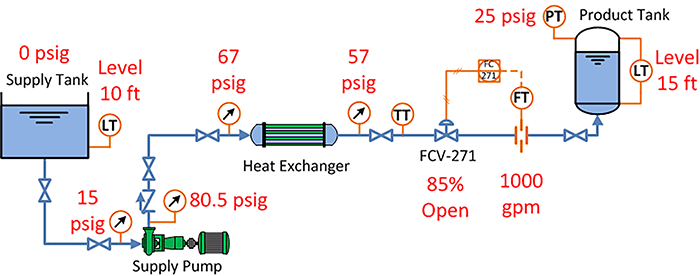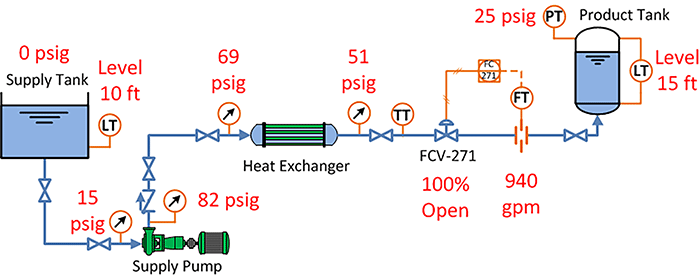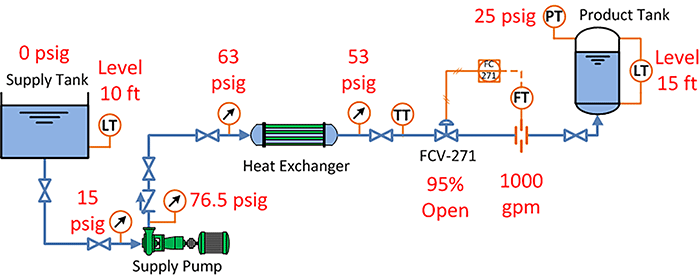System troubleshooting can be a difficult process for the most experienced professionals. Securing the necessary data to support your conclusions can be even more challenging. Before getting started, you will need to know how the system was designed, how it is supposed to operate, and where on the curve your pumps are operating, among other factors. In this article, I will walk you through a system that is operating correctly and two problem scenarios that are often encountered with this system. I will also explain some common pitfalls—and tips on how to avoid them. When it comes to gathering data on a system, building services are among the hardest. Most of the piping system may be hidden behind equipment or built into the physical structure, such as the walls and ceiling, and instrumentation is often few and far between. For example, one engineer recently visited a mechanical room where more than half of the pressure gauges on the pumps were broken or outside of their rated range. In this type of situation, it is important to never speculate on how well they were calibrated, and when comparing these systems, you may have to get a little creative. Do not get discouraged, and do not attempt to take exact measurements in this instance (but you can still receive general data). For instance, if the pressure gauge only goes to 80 pounds per square inch (psi), but the needle is slightly past 80, do not attempt to calculate pressure because you have passed the instrument’s range and any readings will be unreliable. What you will know, however, is that there is a fault somewhere in the system causing it to operate outside of its design parameters. As all components of a piping system are interconnected, a problem with one component will impact the hydraulic performance of the entire system. Because of this, we must be able to understand the symptoms, and then focus on the root cause of the problem. To start, we need to know what is considered normal. If the system has been operational for some time, then the systems operator should have a decent understanding of what normal is for their system. However, it is always helpful, whether you have worked with the pumping system before or are new, to build a flow model to give you a better understanding of what is going on and what normal should be. For this example, we will say that the pressure, flow, level and valve position readings in Image 1 are the normal steady-state operating conditions for this system.
 Image 1. System under normal operation (Images courtesy of the author)
Image 1. System under normal operation (Images courtesy of the author)Normal Operation
- The supply tank is open to atmosphere and its level is maintained at 10 feet.
- The supply pump has a suction pressure of 15 pounds per square inch gauge (psig) and a discharge pressure of 80.5 psig.
- The heat exchanger has an inlet pressure of 67 psig and an outlet pressure of 57 psig, for a total differential pressure of 10 pounds per square inch differential (psid) at 1,000 gallons per minute (gpm).
- The flow control valve is 85 percent open with 1,000 gpm flowing through it.
- The product tank is pressurized to 25 psig and has a level of 15 feet.
 Image 2. System with initial issue.
Image 2. System with initial issue.- supply tank level: OK
- pump suction pressure: OK
- pump discharge pressure: higher than normal
- pump dP: higher than normal
- HX inlet pressure: higher than normal
- HX outlet pressure: lower than normal
- HX dP: higher than normal
- FCV: open farther than normal
- system flow rate: less than normal
- product tank level and pressure: OK
 Image 3. System with expansion issue.
Image 3. System with expansion issue. - supply tank level: OK
- pump suction pressure: OK
- pump discharge pressure: lower than normal
- pump dP: lower than normal
- HX inlet pressure: lower than normal
- HX outlet pressure: lower than normal
- HX dP: OK
- FCV: open farther than normal
- system flow rate: normal
- product tank level and pressure: OK

